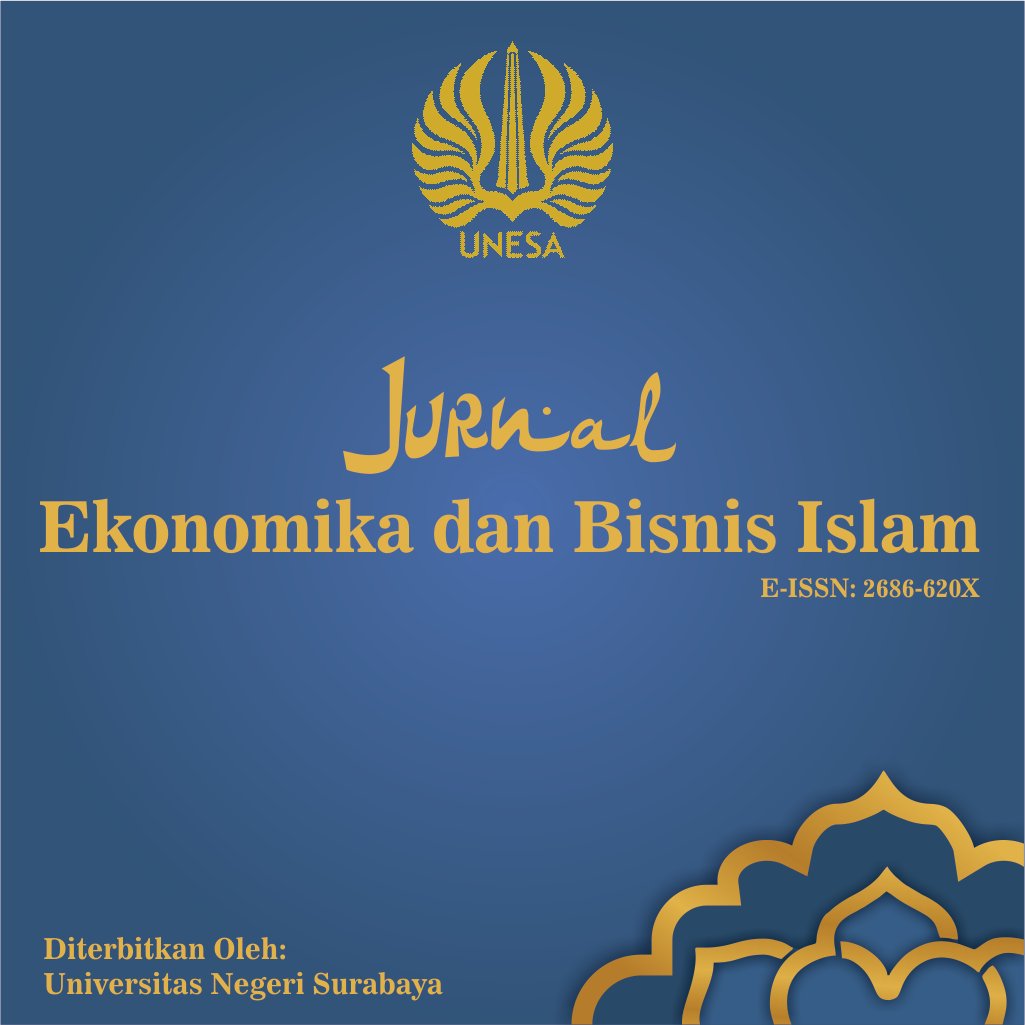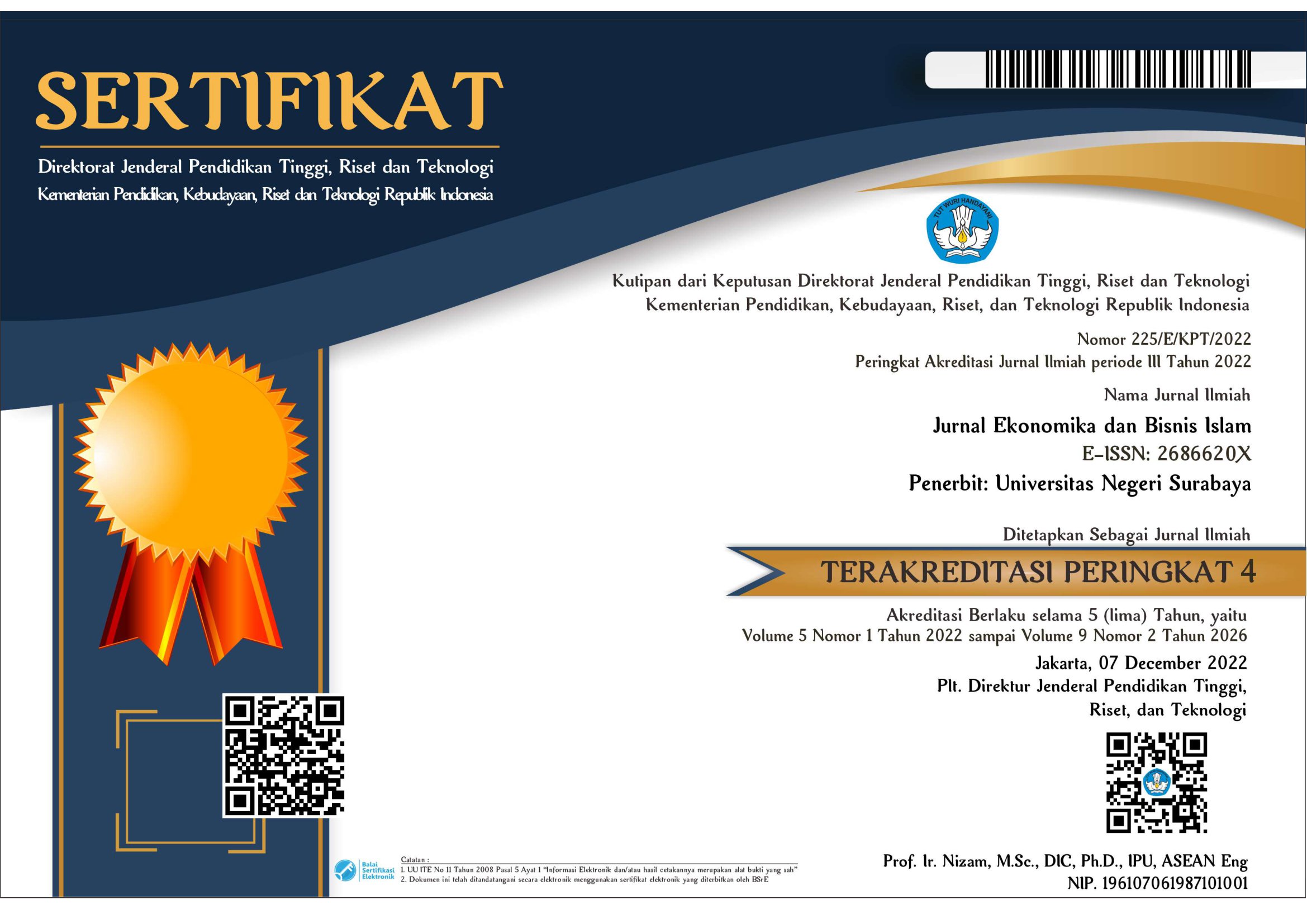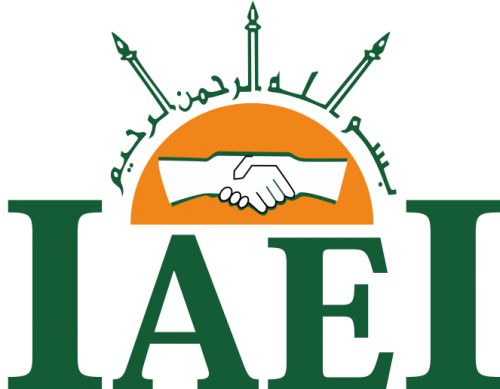Pengaruh Environmental Awareness, Religiosity, dan Risk Aversion terhadap Minat Gen Z Surabaya dalam Berinvestasi Green Sukuk
DOI:
https://doi.org/10.26740/jekobi.v6n2.p1-11Keywords:
Environmental awareness, Religiosity, Risk Aversion, Investment Interest, Green SukukAbstract
This study aims to determine the effect of factors such as environmental awareness, religiosity, and risk aversion on the interest of gen Z Surabaya investors in investing green sukuk. The research method uses a quantitative approach with Structural Equation Model (SEM) data analysis. Purposive sampling technique was used to get 90 respondents through a questionnaire. The results of the study state that environmental awareness has no effect on Gen Z Surabaya's interest in investing green sukuk, while religiosity and risk aversion have a significant effect on investment interest. The implications of the results of this research will contribute to attracting more investors, especially Gen Z, to invest in green sukuk.
References
AAOIFI. (2008). Shariah Standard No. 17: Investment Sukuk. Aaofi, 17.
Aassouli, D., Asutay, M., Mohieldin, M., & Nwokike, T. C. (2018). Green Sukuk, Energy Poverty, and Climate Change: A Roadmap for Sub-Saharan Africa. Policy Research Working Paper, December. https://doi.org/10.1596/1813-9450-8680
Abdillah, W., & Hartono, J. (2015). Partial Least Square (PLS): Alternatif Structural Equation Modeling (SEM) dalam Penelitian Bisnis. Penerbit ANDI.
BEI. (2022). Kinerja Pasar Modal Syariah Q2 2022. https://idxislamic.idx.co.id/whats-on-idx-islamic/data-kinerja-pasar-modal-syariah/
Hair, F.J, Hult, G. T. M., Ringle, C. M., & Sarstedt, M. (2017). A Primer on Partial Least Squares Structural Equation Modeling (PLS-SEM). Thousand Oaks. Sage, 165.
Hair, F Joseph, Black, C. W., Babin, B. J., & Anderson, R. (2010). Multivariate Data Analysis (7th ed.). Pearson Education, Inc.
IFSB. (2020). Islamic Financial Services Industry Stability Report. In RBM Annual report (Issue June). https://www.ifsb.org/sec03.php
Kemenkeu RI. (2019a). Kebijakan Pembiayaan Perubahan Iklim : Suatu Pengantar. https://fiskal.kemenkeu.go.id/files/buku/file/Buku Perubahan Iklim 15062020 ACC.pdf
Kemenkeu RI. (2019b). Pendanaan Publik Untuk Pengendalian Perubahan Iklim Indonesia Tahun 2016-2018. https://climatefinancenetwork.org/wp-content/uploads/2020/04/PCF-Book_Bahasa-version.pdf
Kong, H., Yun, W., & Kim, W. C. (2023). Tracking Customer Risk Aversion. Finance Research Letters, 54(November 2022), 2. https://doi.org/10.1016/j.frl.2023.103698
KSEI. (2022). Dominasi Investor Milenial dan Gen Z di Indonesia. In Https://Www.Ksei.Co.Id/Files/Uploads/Press_Releases/Press_File/Id-Id/208_Berita_Pers_Didominasi_Milenial_Dan_Gen_Z_Jumlah_Investor_Saham_Tembus_4_Juta_20220725182203.Pdf.
Ladamay, A. Z. F., Supriyanto, T., & Nugraheni, S. (2021). Pengaruh Media Sosial, Literasi Keuangan, Risiko, Imbal Hasil, dan Religiusitas Terhadap Minat Berinvestasi Sukuk Generasi Z di Jakarta. Islamic Economics Journal, 7(2), 161. https://doi.org/10.21111/iej.v7i2.6552
Muttaqin, R., & Rosida, D. A. (2022). Pengaruh Literasi Keuangan,Religiusitas Dan Pendapatan Terhadap Minat Investasi Di Pasar Modal Syariah. Management And Business, 5(1).
Revinitiv. (2022). Islamic Finance Development Indicator Report 2022 : Embracing change. http://bit.ly/IFDI2022.
Revinitive. (2022). Green and Sustainability Sukuk Report 2022 : Financing a Sustainable Future.
Santoso, E., & Indrarini, R. (2020). Analisis Pengaruh Marketing Mix Terhadap Minat Masyarakat Membeli Sukuk. Al Iqtishadiyah Jurnal Ekonomi Syariah Dan Hukum Ekonomi Syariah, 6(2), 86. https://doi.org/10.31602/iqt.v6i2.3244
Sugiyono. (2013). Metode Penelitian Kuantitatif, Kualitatif, Dan R&D (19th ed.). Penerbit Alfabeta Bandung.
UNDP. (2022). Studi Mengenai Green Sukuk Ritel di Indonesia.
UNFCC. (2018). Indonesia Second Biennial Update Report.
World Bank. (2017). Implementing The 2030 Agenda. https://pubdocs.worldbank.org/en/491561500316509118/FINAL-web-2030AgendaUpdate-20170713.pdf
Downloads
Published
How to Cite
Issue
Section
License
Copyright (c) 2023 Ibnu Affan, Sulistya Rusgianto

This work is licensed under a Creative Commons Attribution 4.0 International License.
This work is licensed under a Creative Commons Attribution 4.0 International License.
 Abstract views: 1494
,
Abstract views: 1494
, PDF Downloads: 1551
PDF Downloads: 1551














